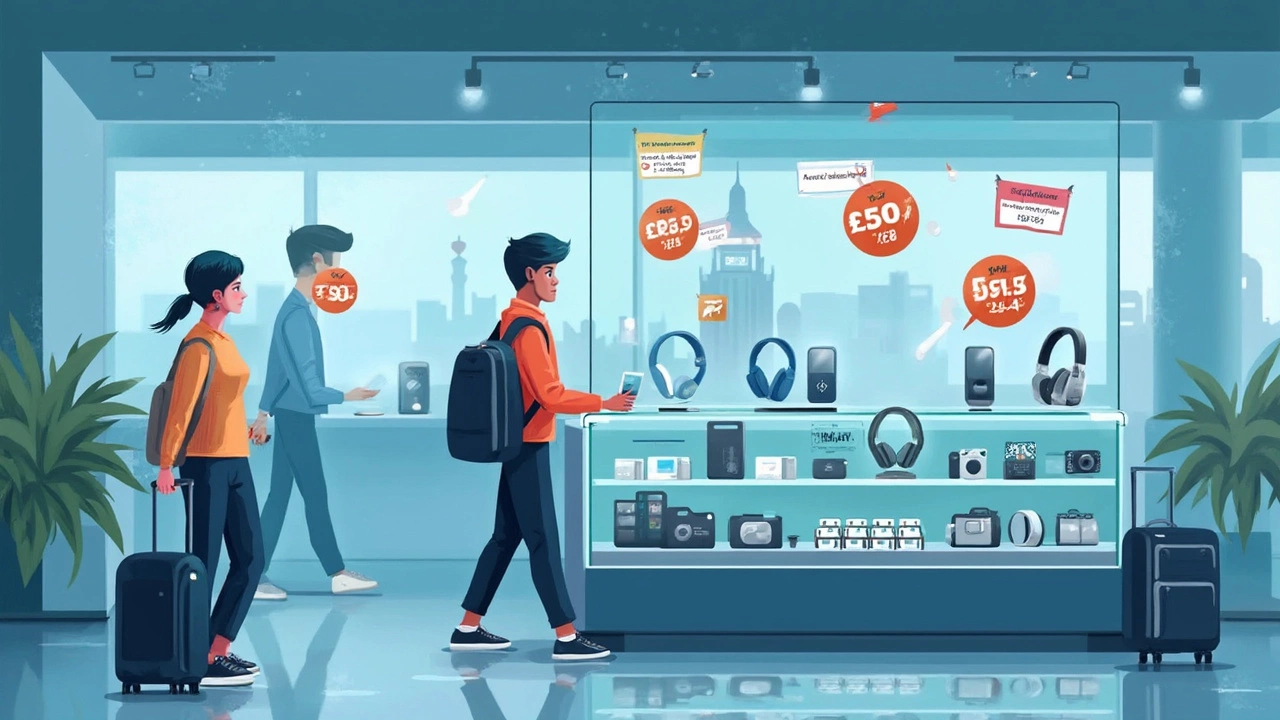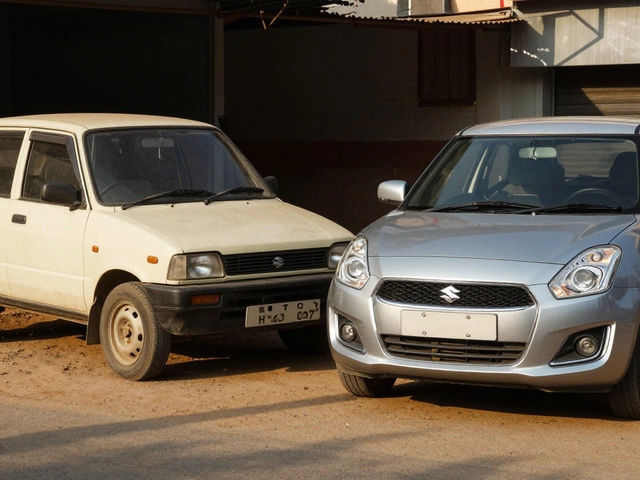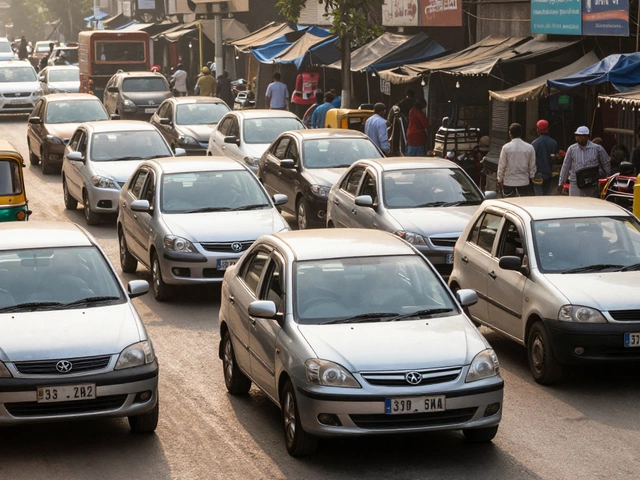Cheaper Electronics Brands in Europe vs India: What Shoppers Need to Know

Ever checked the price tag of a smartphone or laptop while vacationing in Europe and done a double-take? You're not alone. Folks are often surprised to find out certain electronics brands cost less in Europe than they do right here in India. And it's not just a one-off sale or an airport duty-free fluke—there are some real reasons behind the price differences.
Before you burn a hole in your pocket on your next upgrade or ask your cousin in London to grab you an iPhone, it pays to know which brands actually offer better deals overseas. With taxes, shipping, and warranty terms in the mix, it's easy to get caught out if you’re not careful.
This isn’t just about saving a few bucks. The global supply chain, local regulations, and even international trade deals all play a big part in how much you pay for your favorite gadgets. Stick around, and you’ll get a clearer picture of where and why some electronics are genuinely cheaper in Europe compared to India—and whether it’s worth the hassle to buy from abroad.
- Why Are Electronics Sometimes Cheaper in Europe?
- Popular Brands That Cost Less in Europe
- Comparing Price Tags: Real-Life Examples
- What to Watch For: Taxes, Warranty & Compatibility
- Tips for Indian Shoppers Eyeing Europe Deals
Why Are Electronics Sometimes Cheaper in Europe?
If you compare the price of a phone or laptop in Germany versus India, you’ll notice a surprising thing—sometimes, the final bill is actually lower in Europe. Now, why does this happen? A big reason is how brands price their products globally. For many international companies, especially the big names in electronics, Europe is a key market. To attract buyers and fight local competition, they sometimes set their prices aggressively.
Let's get specific. European countries like Germany and France have giant online retailers, and intense competition pushes down prices. If a brand like Samsung wants to keep up, they’ll match or even undercut rivals, especially during big sales or the end of product cycles. Meanwhile, in India, import duties and GST (Goods and Services Tax) can seriously bump up the cost. For example, as of mid-2024, imported mobile phones in India can face over 20% duties on top of local GST. That’s a chunk right off your budget.
Another point—VAT (Value Added Tax) in Europe varies by country, but non-EU tourists can often claim a part of it back through tax refund schemes. You won’t get this kind of break as easily in India. Plus, EU countries don’t usually have the same layers of distributor margins seen here. In India, a gadget might pass through multiple distributors and retailers before landing in your hands, with each adding their own markup.
- Brands fight harder for market share in European countries, so base prices start lower.
- India’s high import duties and GST instantly jack up foreign-made gadgets’ MRPs.
- Tax refund schemes for tourists in Europe mean potential extra savings.
- Electronics in Europe often go on heavy discount during annual sales, like Black Friday or local festive shopping periods.
To make it clear, check out this quick table comparing how taxes affect electronics pricing in both regions:
| Country | Import Duties on Electronics | GST/VAT |
|---|---|---|
| India | 15-22% | 18% |
| Germany | 0% (within EU) | 19% (VAT, can claim refund as a tourist) |
| France | 0% (within EU) | 20% (VAT, refund possible for non-EU residents) |
The bottom line? For electronics brands that manufacture in bulk, Europe is a battleground for price, while Indian taxes often push retail costs much higher—unless the brand has local manufacturing plants here, which is becoming more common but hasn’t closed the gap for all products yet.
Popular Brands That Cost Less in Europe
If you’ve ever chatted with folks who travel, you’ve probably heard about someone picking up a phone or a laptop in Europe for less than what it costs at home. It’s not just travel luck—certain big-name electronics brands do drop their prices across the continent.
Here are some electronics brands that are often noticeably cheaper in Europe than in India:
- Apple: An iPhone 15 Pro 128GB, for example, usually retails in Germany for about €1200 (around ₹1,08,000), while in India the same phone can cost you over ₹1,34,900. The same goes for Macs, iPads, and even Apple Watches, especially during big European seasonal sales.
- Samsung: While Samsung is a Korean giant, their flagship devices like the Galaxy S24 are often discounted more aggressively in places like France or Spain due to local competition and carrier deals. You’ll also spot bundle offers or tax rebates for tourists.
- Sony: If cameras or headphones are your thing, you can expect Sony Alpha cameras to be 10-20% cheaper in Europe, not to mention noise-canceling earbuds that regularly go on promo in electronics chains like MediaMarkt or Saturn.
- Dyson: Their popular vacuum cleaners and hair styling tools sometimes cost ₹10,000–₹20,000 less in the UK or Germany, even after converting currencies, thanks to local deals and lower taxes.
- Nintendo: The Switch consoles, games, and accessories are priced more modestly in Europe due to a larger market for gaming and frequent store-level offers.
You might wonder why the price gap is so wide. The reasons boil down to a mix of lower VAT in some European countries, bigger online and offline retail competition, and local production or cheaper imports in the EU zone. In India, heavy import duties and the Goods & Services Tax (GST) can drive up prices significantly for anything not assembled locally.
For a snapshot, here’s a side-by-side comparison of a few popular products bought in Europe versus India (approximate prices as of early 2025):
| Brand & Model | Europe Price (₹) | India Price (₹) | Average Savings |
|---|---|---|---|
| Apple iPhone 15 Pro (128GB) | 1,08,000 | 1,34,900 | 26,900 |
| Samsung Galaxy S24 (256GB) | 82,500 | 94,000 | 11,500 |
| Sony WH-1000XM5 Headphones | 26,000 | 34,990 | 8,990 |
| Dyson V12 Detect Slim | 38,500 | 56,900 | 18,400 |
| Nintendo Switch OLED | 28,000 | 35,999 | 7,999 |
Keep in mind that deals can vary. Shopping during major European clearance sales like Black Friday or Boxing Day can make the gap even bigger. However, always factor in what it’ll actually cost you after currency conversion, card charges, and possible customs duty at the Indian airport. But if you’ve got friends or family travelling, these brands are usually worth looking out for.

Comparing Price Tags: Real-Life Examples
Here's where things get interesting. If you’ve ever window-shopped online for a new iPhone or laptop, you’ll spot some massive differences in what you’d pay in Europe versus India. The gap is sometimes big enough to fund a weekend getaway—or at least a bunch of nice dinners.
Let’s look at some straightforward comparisons, using average 2025 pricing pulled from official online stores and electronics retailers in both regions:
| Product | Europe Price (EUR/INR) | India Price (INR) | Price Difference (%) |
|---|---|---|---|
| Apple iPhone 15 (128GB) | 950 EUR (87,500 INR) | 1,14,900 INR | ~24% Cheaper |
| MacBook Air M2 (256GB) | 1,300 EUR (1,19,800 INR) | 1,34,900 INR | ~11% Cheaper |
| PlayStation 5 Console | 550 EUR (50,700 INR) | 62,000 INR | ~18% Cheaper |
| Bose QC45 Headphones | 280 EUR (25,800 INR) | 29,900 INR | ~14% Cheaper |
Now, before you start plotting your shopping spree, take this advice from Rajeev Makhni, a tech expert everyone in India knows:
“Don’t just look at the sticker price—you need to factor in things like VAT refunds, warranty, and even different versions of the same product. Sometimes you’ll save a lot, sometimes it’s barely anything after you add all the costs.”
One interesting thing: even after adding in European VAT (usually included in the price), a lot of top-tier electronics are still cheaper than their Indian counterparts. For brands like Apple, Sony, and Bose, this is mostly because of lower import duties and smoother supply chains in Europe.
And if you claim a VAT refund as a tourist, you can slash the price even more. Here’s the basic way people pull it off:
- Shop at a store that offers tax-free shopping for non-EU residents.
- Get a VAT refund form at checkout.
- Present your form and purchase at the airport before you head home.
- Get your VAT refund to your card or as cash.
Just remember, you might need to pay customs duty if you declare your electronics at Indian customs on the way back. Not everything is a straight win, but for electronics brands like Apple, the savings in Europe can often be totally worth the extra effort.
What to Watch For: Taxes, Warranty & Compatibility
Snagging electronics abroad can be tempting, but before you swipe your card, there are a few key things to keep in mind. The price in the store isn’t always the final cost you’ll pay once everything—like taxes, warranties, and even plug types—are factored in.
Let’s break it down:
- Taxes and Duties: Just because a phone or laptop looks cheap in Europe doesn't mean it'll stay that way. In India, anything over Rs 50,000 is usually taxed at 18% GST. Bringing electronics back with you (or having someone carry them) can attract customs duties at Indian airports, especially if the product value exceeds the free allowance (often Rs 50,000 for travelers from Europe). On top of that, most European store prices include VAT—so tourists can actually claim VAT refunds (like 19% in Germany) when leaving the EU, which helps bring the price down.
- Warranty Issues: That slick international warranty? Most global brands only cover you in the country where you bought the gadget—especially Apple and Samsung. If something breaks after you’re back in India, you might need to ship your device back to Europe for repair. Some brands, like Dell or Lenovo, offer global warranty on laptops, but always double-check the specific model’s terms before buying.
- Compatibility Things to Check: Not all chargers, plugs, or network bands are the same across continents. Europe uses 230V plugs, so you’ll need an adapter to use their charger in India. Plus, if you’re buying a phone, check if it supports Indian 4G/5G bands—some European models don’t play nice with all Indian operators.
Here’s a quick look at how costs can add up:
| Factor | Europe | India (after import) |
|---|---|---|
| Store Price (e.g., iPhone 15 128GB, Germany) | €949 (approx. ₹85,000) | ₹79,900 (MRP, but sometimes higher due to GST) |
| VAT Refund | -€151 (approx. -₹13,500) | N/A |
| Indian Import Duty (if applicable) | N/A | Up to 42% on mobile phones |
| Global Warranty | Often limited | Full only for local purchase |
You can see the final price difference isn’t always as huge as the shop sticker may suggest, especially when taxes and duties stack up. Always tally up the actual numbers before deciding where to buy your next electronics brands product.

Tips for Indian Shoppers Eyeing Europe Deals
If you’re thinking about scoring electronics brands from Europe, you’ve got to be a little strategic. Sure, saving money is nice, but there’s fine print waiting to catch you off guard. Here’s how to actually make those deals worth it—and avoid stuff that could end up costing more to fix than to buy in India.
- Always check product compatibility. European chargers come with Type C plugs and the voltage is 230V. Some gadgets, especially hair dryers or gaming consoles, might not play nice with Indian sockets. Adapters can help, but with high-end electronics, it's better to confirm dual-voltage support. Laptops and phones are usually fine, but check the label first.
- Factor in the hidden costs. When bringing goods home, Indian customs will hit you with a duty if your electronics are over ₹50,000 (for personal use, including your allowance). Import duties for most electronics are 18-28%. This can shrink your savings fast.
- Look up warranty coverage. Apple and some other big brands offer international warranties, but most companies don’t. Local warranty means you might end up paying for repairs out of pocket if things go south at home. Confirm before buying if the brand or model you want is covered in India.
- Understand the VAT refund process. In the EU, you can claim back the Value Added Tax (VAT), which runs from 19% (Germany) to 27% (Hungary), at the airport when you leave. Keep your purchase invoice and fill out the paperwork before you board your flight. Not all shops participate in this scheme—look for "tax-free shopping" signs.
- Compare prices real-time. Don’t just trust what a friend told you last year. Prices change fast with currency rates and new launches. Use official Indian brand sites and popular European retailers like MediaMarkt (Germany), Fnac (France), or Amazon UK for real comparison.
Here’s a simple look at typical extra costs for reference:
| Cost Factor | Details |
|---|---|
| Customs Duty | 18–28% (if item value above ₹50,000) |
| VAT Refund | 19–27% (refunded if claimed correctly) |
| International Warranty | Check by brand/model—most limited by region |
| Plug Adapter/Voltage | Type C plug; confirm dual-voltage compatibility |
Bottom line: Do the homework. Don’t assume every Europe deal means savings back home. Sometimes what seems like a killer discount can turn out to be not so great once you factor in all the practicalities. Taking a few minutes to double-check specs, warranties, and total cost can save you from a world of headache—and keep that sweet deal sweet.





